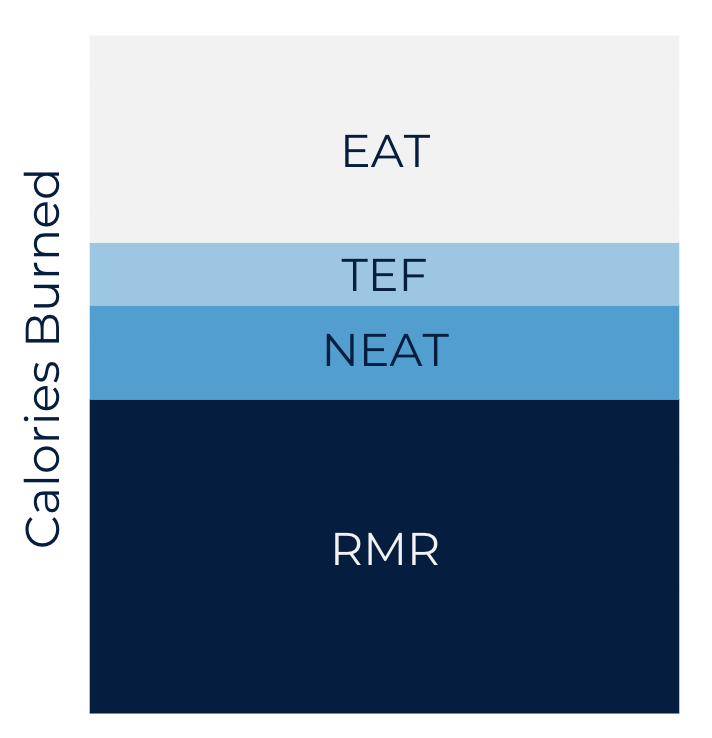You’re dedicated to your training—committing to strength work twice a week and honing your skills for technical climbs—but are you seeing the progress you expect?
If your answer is no, you might want to look at your nutrition. What you eat impacts your performance, recovery, and day-to-day energy levels. Without a targeted nutrition strategy, you risk burnout, injury, and you also risk sacrificing your full potential. With so much conflicting information out there, figuring out what to eat can feel overwhelming. Uphill Athlete Dietitian Alyssa Leib has got you covered.
Get ready to dive in to discover how nutrition just might be the key that unlocks your peak potential and performance.
GETTING STARTED
Before we dive into the science behind nutrition, let’s start out with some definitions.
You have probably heard the term “macronutrient” before, but what does it actually mean? Simply put, a macronutrient, or macro, is a nutrient that our body needs in larger amounts that contains calories. The macronutrients are carbohydrates, protein, and fat. A micronutrient, on the other hand, is a nutrient that doesn’t provide calories but that humans need, in smaller amounts, to function effectively – both in sport and in everyday life.
A calorie is not something to fear! A calorie is simply a unit of energy. So, when you see the term “low calorie”, think “low energy”. While the foods that you eat provide you with energy (calories), how your body utilizes, or burns, calories is a little more complicated.

Total daily energy expenditure (TDEE) is the total number of calories that your body burns on a given day. TDEE is made up of four components, whose proportions of total calories burned are shown in the figure above.
- Resting Metabolic Rate (RMR)
This is simply the energy that your body needs to exist. Your body requires energy to make your heart beat, your lungs expand and contract, and your eyes blink, as well as all of the microscopic processes that go on at all times. RMR also includes basic activities of daily living, such as lifting your arm to reach food in the top shelf of your pantry, walking to the restroom, and so on. - Non-Exercise Activity Thermogenesis (NEAT)
This is just a fancy way to describe all of the movement that you do throughout the day that isn’t a part of intentional exercise. Playing with your kids, walking through the grocery store, and even stabilizing your body while you stand to commute on the train all factor into NEAT. - Thermic Effect of Food (TEF)
Have you ever heard that celery has “negative calories” because it requires more energy to chew and digest it than the energy it provides? This isn’t exactly true, but this is a good example of TEF. Your body requires calories in order to break down (digest) and extract calories from food. - Exercise Activity Thermogenesis (EAT)
This is what most people think of when they think about burning calories. Simply put, these are the calories your body uses during intentional exercise, whether it’s running, ski mountaineering, weightlifting, or yoga.
The key points to take away:
- Your body needs calories even in the absence of exercise. This means that you deserve – and need – to eat, even on a rest day.
- On most days, your body’s primary driver of calorie burn is simply the energy your body needs to exist.
- Calorie needs are highly individualized and each of these components will depend on factors such as the efficiency of individual metabolism, body size and composition (e.g., muscle burns more energy than other body tissues), medications, etc.
- A diet consisting of just celery is unsustainable.
MACRONUTRIENTS
CARBohydrateS
Carbs are the preferred energy source of our muscles and brains – and as such should serve as the centerpiece of any athlete’s diet. Carb consumption also helps with digestion and cholesterol metabolism. Carbs are stored in the liver and muscles for later use in a form called glycogen. When fully recovered, such as at the end of a taper and carb load, the average person can store up to 500 grams (2000 calories) of glycogen in the muscles and an additional 100 grams (400 calories) in the liver.
Furthermore, carbs are protein-sparing. When your body doesn’t have enough carbs available, such as during training or a restrictive eating disorder, it will break down muscle tissue to create more carbs in a process called gluconeogenesis. This is one of the many reasons why it’s important to top off your stores before heading out for a run (and why carb loading can improve performance in endurance sport).

There are two primary types of carbs:
- Simple carbs: Also known as sugar (glucose, galactose, or fructose), simple carbs are found in foods like candy, sports drinks, and fruit. Simple carbs are digested quickly. This can spike your blood sugar – a less desirable effect during daily life, but ideal during exercise when your muscles need a quick hit of energy.
- Complex carbs: Starch and fiber are the two forms of complex carbs. The former can be found in foods like whole grains, winter squash, and potatoes, while the latter is found in fruits, vegetables, whole grains, and legumes. Starch is plants’ storage form of carbs and is digested more slowly than simple carbs, resulting in a slower increase in blood sugar relative to simple carbs. Fiber is indigestible by the human body and plays an important role in digestion, cholesterol metabolism, and gut health.
A note about ketosis: While the brain can utilize ketones, derived from fat, for energy, this is not optimal. Research on the ketogenic diet indicates reduced athletic performance in endurance athletes and detrimental effects on various health measures.
PROTEIN
Protein is best known for its function in muscle growth and repair, but it plays many important roles in the body, including digestion, energy production, hydration, immunity, and nutrient transport and storage. Protein also plays other structural roles in joints, skin, and fingernails.
As previously mentioned, protein can also serve as an energy source, through gluconeogenesis – but this comes at a high calorie cost, so is only used when absolutely necessary (e.g., in cases of inadequate carbohydrate or overall calorie intake). All this to say, protein is very important for daily bodily functions. If you aren’t eating enough protein, you can’t expect your body to prioritize muscle building or recovery from training over these daily functions.
Proteins are composed of amino acids – you can think of these as the Legos used to build a protein house. There are 20 total amino acids, but only 9 are considered “essential”, meaning they are not produced by the human body and must therefore be obtained from food.
Humans need all essential amino acids (EAAs) in the correct amounts, but some amino acids (leucine, isoleucine, and valine, also known as branch chain amino acids for their molecular shape) are of particular importance in building muscle. Leucine, in particular, has been shown to stimulate muscle protein synthesis.
While most animal proteins (meat, eggs, and dairy) contain each EAA in the proper ratio, this is not the case for plant proteins, which are typically “incomplete”, meaning they are deficient in at least one EAA. This doesn’t mean plant-based athletes are doomed! Even if you are getting the majority of your protein from plants, it is still possible to meet your protein needs, but eating a variety of foods is key. For example, by eating rice (low in lysine but high in methionine) with beans (low in methionine but high in lysine), you can get enough of both lysine and methionine to equal a “complete” protein. Rice and beans are considered “complementary proteins” because each balances the other out. In addition to containing incomplete proteins, plant-based proteins may not be well-utilized by the body. Vegetarians and vegans may need to increase total protein intake to account for this.
Meat, eggs, and dairy are great sources of animal-based protein and good plant-based sources of protein include tofu, tempeh, seitan, beans and lentils, and nuts and seeds.

FAT
The primary purpose of fat is to store energy in the body. Fat is broken down and used for energy, particularly during low intensity exercise. It also provides a source of insulation, comprises certain hormones, and is necessary for the absorption of certain nutrients. Notably, energy from fat that you eat is not available to your body for several hours, so it is not a great source of fuel during training.
There are three main types of fats:
- Saturated fats
Saturated fats are solid at room temperature and are found in meat, dairy, eggs, and coconut oil. Eating too much saturated fat can contribute to higher levels of LDL cholesterol (“bad” cholesterol) and it is recommended to limit saturated fat intake to less than 10% of your total daily calories. (On a 2500 calorie diet, this means limiting yourself to less than 28 grams of saturated fat per day, or the amount found in 4 ounces of sharp cheddar cheese or 3 tablespoons of coconut oil.) - Unsaturated fats
Unsaturated fats are liquid at room temperature and are found in nuts and seeds, plant oils, avocados, and fatty fish. Omega-3 fatty acids are included in this category and are considered essential fatty acids (EFAs). Similar to the essential amino acids, the human body cannot synthesize these EFAs and therefore they must be obtained from the diet. The best sources of omega-3s are fatty fish, like salmon or mackerel, but smaller amounts can be found in chia and flax seeds and certain types of algae. Omega-3s are anti-inflammatory and associated with lower levels of blood cholesterol. - Trans fats
Trans fats are only naturally occurring in a handful of foods, including certain meats and butter. They were previously commonly used in processed foods such as microwave popcorn, fried foods, and biscuits, but are now effectively banned in the United States and Europe due to their association with increased risk of heart disease.
ALCOHOL
MICRONUTRIENTS
Micronutrients include vitamins and minerals. Vitamins are organic, meaning they are derived from living things; minerals are not. Although they do not provide us with energy in the form of calories, vitamins and minerals play many diverse roles in the body, from supporting the immune system to strengthening bones and healing wounds.
Most micronutrients are very tightly regulated in the blood, making it hard to identify deficiencies via standard lab testing. The best way to ensure that you are eating enough of a vitamin or mineral is to work with a Registered Dietitian.
There are 26 essential vitamins and minerals that must be included in the human diet. A detailed explanation of each one far exceeds the scope of this article. Therefore, we have selected a subset of micronutrients of concern for uphill athletes.
This does not mean that you do not have to worry about nutrients not listed here – they are simply less frequently encountered as challenges among athletes. Unless you have a deficiency in one of these micronutrients, supplementation is not recommended and will not confer benefits to your athletic performance.
IRON
Iron may be the most important micronutrient for uphill athletes due to its role in oxygen transport.
Iron comprises a protein in red blood cells called hemoglobin. Red blood cells are responsible for carrying oxygen throughout your body – including to your muscles. Oxygen is essential in aerobic activity – and as such, efficient transport of oxygen through the blood and to the muscles is critical in endurance sports like ultrarunning and mountaineering.
Common symptoms of iron deficiency are fatigue and weakness which can obviously interfere with training. Because of its role in oxygen transport, iron status is particularly important in high altitude mountaineering, where there is less oxygen in the air.
Despite the important role that iron clearly plays in exercise performance, as many as 35% of athletes may be deficient in iron. Iron is lost through sweat and red blood cells may be destroyed through a process called “foot strike hemolysis” – the physical breakdown of these oxygen-transporting cells resulting from repetitive pounding on the ground. As such, it is critical for athletes to pay attention to their iron levels and ensure that they are eating enough.
Sources of iron:
- Beef
- Liver and other organ meats
- Tofu
- Lentils
- Spinach and other dark leafy greens
- Iron-fortified cereals
Although iron can be found in plant sources, it is not efficiently absorbed by the body. Because of this, plant-based athletes may need to double their iron intake or take a supplement in order to meet iron needs. We highly advise not taking an iron supplement without up-to-date lab work as too much iron can cause organ damage.
VITAMIN D
Known as the sunshine vitamin because we are able to synthesize it from exposure to UV rays, vitamin D wears a lot of different hats, playing important roles in bone health, immunity, and even mental wellbeing. Deficiency can result in fatigue, depression, increased risk of illness, and bone injury, so it is easy to see why vitamin D is important for athletes!
Despite its nickname, if you live above about 40 degrees north of the equator or below about 40 degrees south of the equator, it can be hard to get enough UV rays to synthesize the right amount of vitamin D, meaning it must be obtained from the diet. However, vitamin D is sparse in foods, so a supplement may be warranted unless you are lucky enough to enjoy tropical sunshine year-round.
Sources of vitamin D:
- Fatty fish, like salmon
- Fortified dairy products or dairy alternatives
- Fortified orange juice
CALCIUM
VITAMIN B12
Vitamin B12 is involved in nervous system function, red blood cell production, DNA synthesis, and metabolism. Deficiency symptoms include fatigue, pins and needles sensation in the fingers and toes, and muscle weakness. While all athletes should strive to get enough vitamin B12, deficiency is of particular concern for athletes following plant-based diets since it is not found naturally in any plant foods. While lacto-ovo vegetarians may be able to meet their B12 needs through eggs and dairy, strict vegans may need to supplement.
Sources of vitamin B12:
- Liver and other organ meats
- Fish
- Beef
- Fortified nutritional yeast
ANTIOXIDANTS

Sources of antioxidants:
- Fresh fruits and vegetables: citrus fruits, pumpkin, dark leafy greens, bell peppers
- Nuts and seeds; Brazil nuts are particularly high in selenium
It may seem like a good “insurance policy” to turn to a vitamin C supplement, right? Not so fast! Research indicates that megadoses of vitamin C may actually negatively affect performance and training adaptations. It’s best to meet your vitamin C needs by eating a variety of fresh fruits and vegetables.
Now that you understand the role that macro- and micronutrients play in performance and health, check out Part 2 of this series to learn how to put it all together (coming soon).
Reviewed by Chantelle Robitaille, MSc.

